
views
Close your eyes and take a deep breath.

Calm your mind and reduce stress before smiling for a photo. Smiling on cue, such as for a photograph, can be stressful! Stress about nailing a perfect grin can cause your facial muscles to tense up, leading to a fake or even frightened look. To manage your smile stress, take a moment to close your eyes, relax your muscles, and breathe deeply. Think of it as getting yourself grounded and centered for a great performance, just like a singer, actor, or athlete might do.
Loosen up your mouth and your mood with funny faces.

This keeps your facial muscles from tightening up—and may make you laugh! Try opening your eyes and mouth really wide and then closing them several times, or scrunching your face up really tight and then releasing it. Then, do something even sillier like making “motorboat” sounds by flapping your pursed lips while exhaling through them. You’ll get the photographer to laugh, which will make you laugh, and voilà—you’ve got a great natural smile going!
Tell jokes along with the photographer.

Hold a joke contest to put everyone in the smiling mood. Tell a quick joke to the photo-taker, then ask them to come back with their own. And don’t feel pressure to come up with great jokes—even if you tell some real groaners, you’ll end up laughing about how bad they were! This is also a great strategy when you’re trying to take a group photo and are having trouble getting everyone to smile.
Think of something that makes you happy.
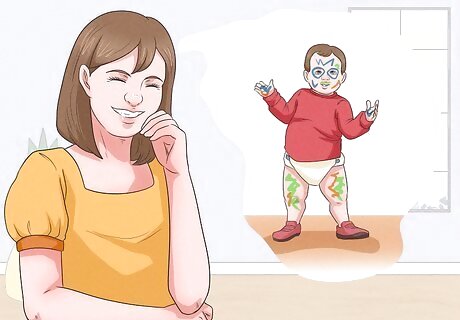
Pick out a happy personal memory or something from pop culture. For example, think of a loved one or particularly happy moment in your life. Or, recall a movie clip, silly song, internet meme, or similar item that always makes you grin. You’ll be hard-pressed not to crack a smile, no matter what situation you’re in! Visualize the person or event in as much detail as you can. Imagine yourself in that situation or with that person right now. You might even imagine the photographer or the person you’re talking to as your smile-inducing loved one!
Try saying “money” instead of “cheese.”
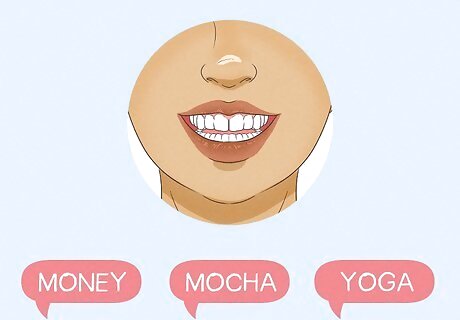
Words like “money,” “mocha,” or “yoga” may produce a more realistic fake smile. As children we're often taught to say “cheese!” for photos. Actually, though, “cheese” isn't great for a natural smile. Some photographers prefer words that end in an “ah” sound because they cause your cheekbones to rise slightly. Others say the “ee” sound creates a more natural smile look. Practice in the mirror and see which options work best for you. If you’re taking pictures of someone and are trying to get them to smile, the simple act of surprising them by saying “say moolah” instead of “say cheese” may cause a genuine smile anyway.
“Smize” by lifting your eyebrows and cheeks.
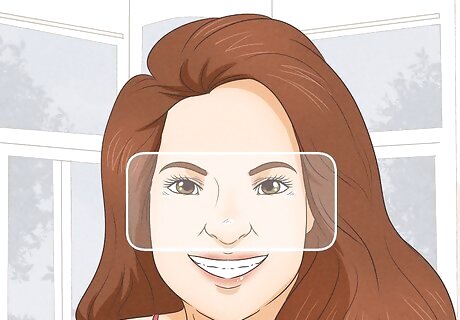
Make your fake smile more realistic by focusing above your mouth. While you can’t voluntarily contract the upper cheek and eye muscles that create a genuine smile, you can approximate the look with some practice. Intentionally focus on giving a slight lift to the sides of your cheeks and eyebrows when you smile on cue for a photo or similar situation. Even better, practice beforehand in the mirror! Smiling with your eyes—or “smizing”—is a hallmark of a genuine smile. Try covering your mouth so that only your eyes and eyebrows are visible in the mirror. You should be able to “see” the smile even without seeing your mouth.
Compare your real and fake smiles so you can practice.
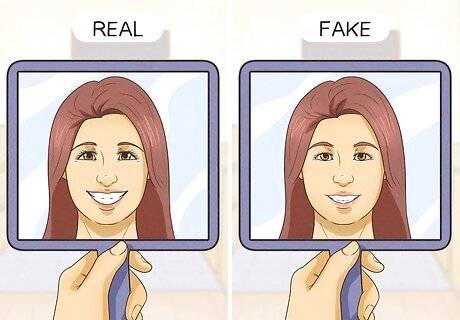
Look at pictures or in the mirror and compare your mouth and face. Generally speaking, a “fake” smile involves only your mouth, while a “real” smile includes your eyes and cheeks. Spot the differences between your smiles, then practice making your on-cue smile in the mirror so you can better replicate your genuine one. Over time, you’ll build up muscle memory and change your fake smile for the better. During a genuine smile, sometimes called a “Duchenne smile,” muscles in your cheeks and eyes contract involuntarily. You can’t voluntarily control these muscles during a manufactured smile.
Exercise your smile muscles.
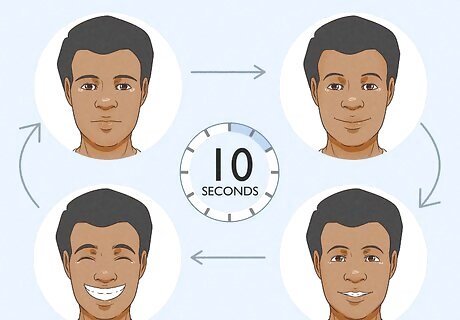
Strengthening and toning these muscles may help your smile look more natural. Start with a neutral facial expression, then crack a slight smile (without showing any teeth) and hold it for 10 seconds. Show a bit of teeth and hold for 10 seconds, then show more teeth for 10 seconds, then give your biggest toothy grin for 10 seconds. After that, work your way back down to the starting position. Do this exercise up to 5 times per day. To increase the resistance on the muscles, go through the exercise while using your index fingers to apply outward pressure to the sides of your mouth.
Force a smile to bring on a real smile.
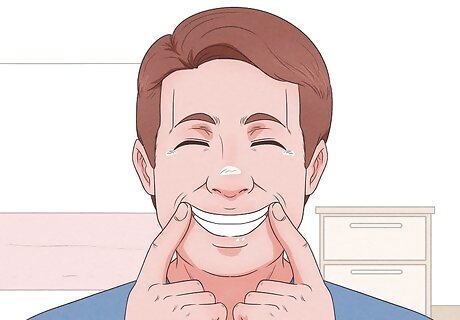
It sounds strange, but making yourself smile can increase your happiness. 150 years of scientific research says that putting your face into a smiling position, even when you have to force it, can genuinely put you into a happier state of mind and encourage natural smiling. So, when you want to smile out of genuine happiness, fake it 'til you make it! Here’s an even stranger idea—clamp your teeth down lightly on a pencil or chopstick to put your face in a smiling position. Just like faking a smile, this should increase your happiness and make you want to smile genuinely. But beware—clamping a pencil between your lips causes a frown and may make you more unhappy!
Build confidence with dental care.
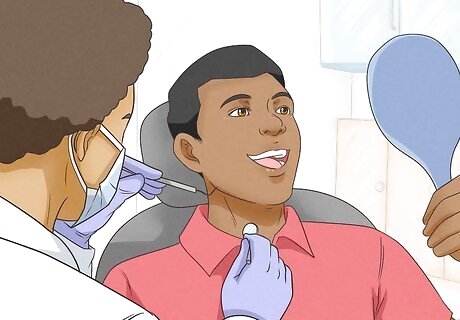
Don’t let dental pain or embarrassment interfere with your smile. In some cases, a dental problem may make it physically painful for you to smile. More often, though, self-consciousness about how your mouth, teeth, or gums look may make you hesitant to smile. Visiting your dentist and keeping up a good dental care routine can go a long way toward addressing these barriers to smiling. Brush your teeth twice per day, and floss once per day. Rinse with an antibacterial mouthwash. Visit your dentist once or twice per year for checkups and cleanings. Don't forget about your gums. Gum health is an important part of a healthy smile. Consider carrying a small kit with you when you go out. You'll be able to brush or just clean stray bits out of your teeth after a meal. Teeth whiteners may help manage minor imperfections in your smile that make you self-conscious. Having missing teeth, crooked teeth, or bad gums can be painful and embarrassing. The job of corrective dentistry is to fix these sorts of issues.
Embrace your unique smile.

Smiling is universal, but it’s also unique to each of us. It stands to reason that no two smiles are exactly alike, and that’s a good thing! Whether from shyness, embarrassment, social pressures, or other reasons, you may have a difficult time smiling. Whatever happens to be holding you back from smiling, though, can be overcome with the right attitude. When you feel a smile coming on, remind yourself to not try to hold it back. Remember that smiling is good for your physical and emotional health. Try looking in the mirror, thinking of something happy or funny that causes you to crack a genuine smile, then saying to yourself, “This is my smile and it’s a good one!”

















Comments
0 comment